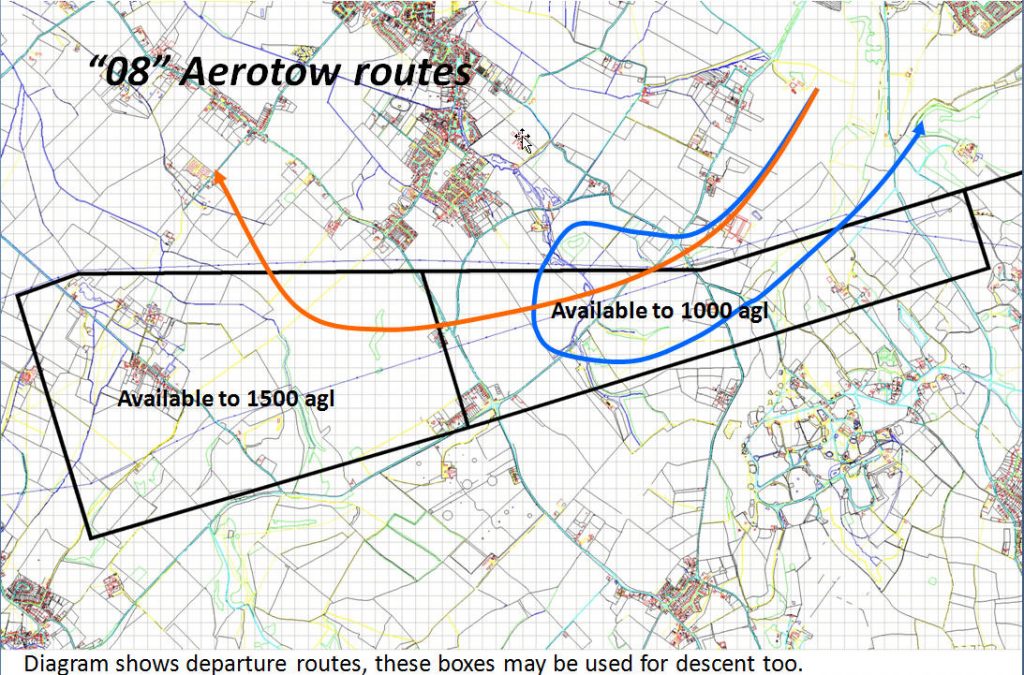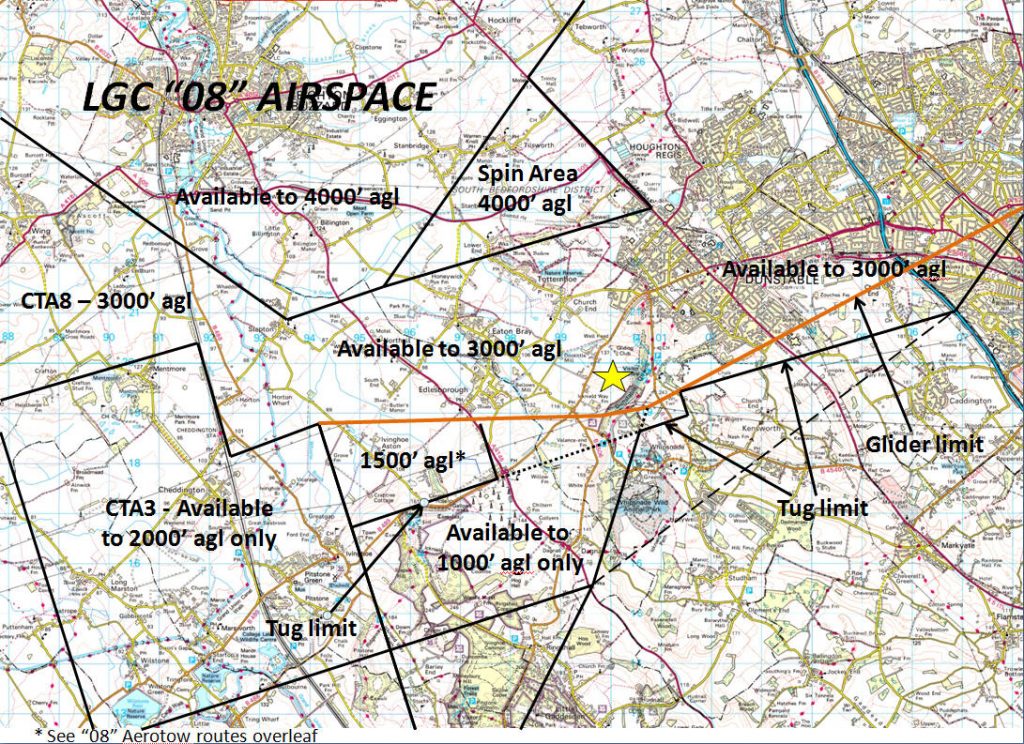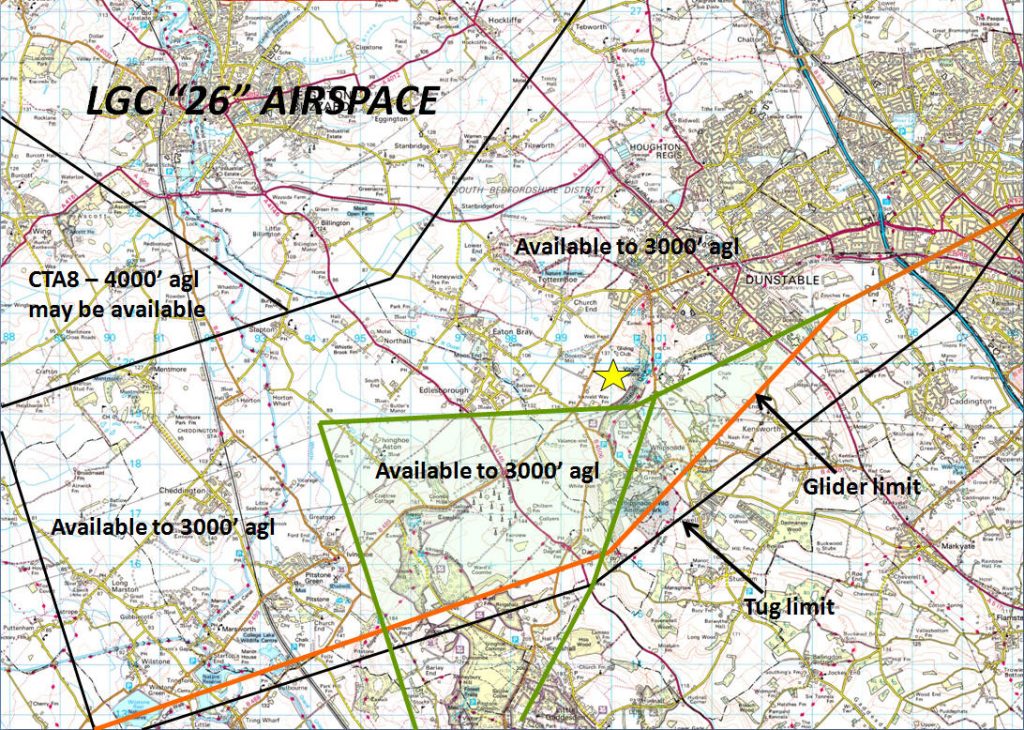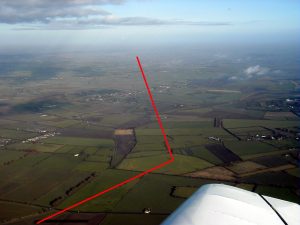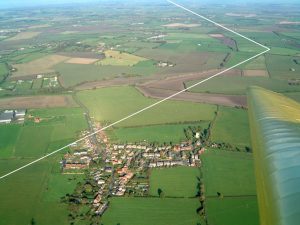Essential Information Airspace Status 07 Airspace 25 Airspace 4000′ Tows
Essential Information
The airspace around Dunstable is complex and subject to change. A thorough working knowledge of the local geography and position of airspace boundaries is essential for all tug pilots. Tug pilots can be expected to be checked regularly on their knowledge of this. The ‘local airspace’ is shown below. It also shows the airspace in which aero-towing can take place when Luton are operating on runway 07. This information is subject to change from time to time and will be shown on the latest CAA 1:500,000 Southern England chart and/or the Letter of Agreement we have with LTCC.
- All tug pilots must have an airspace rating for operations in and around the London Gliding Club.
- All tug pilots must be familiar with the aero-towing concessions available when Luton are using 07, and make appropriate use of them.
- All tug pilots must be familiar with the boundary between the 3500′ based CTA and the 4500′ based CTA, In order to take glider pilots requiring 4000′ tows legally and efficiently to the optimum position below the 4500′ CTA (see diagrams below).
- Aero-tows should also make use of the 25 airspace when Luton are using 25. Landing direction at Luton is constantly promulgated on Luton ATIS 120.575mhz. This should be monitored and confirmed before using the 25 area.
- A tow above 4000′ agl is no longer practical due to increased airspace to the NW of us.
- Under certain circumstances, arrangements may be made with LTCC to to tow to 4000′ overhead, usually for aerobatic competitions. These arrangements tend to be slightly different every time and if you find yourself towing in these circumstances, ensure you get a specific briefing.
- Adhoc requests to climb to 4000′ overhead should be declined.
- Please note diagrams below will adjusted soon to reflect the Luton Runway designator change from 08 to 07 and 26 to 25.
Airspace Status
Before towing, establish Airspace Status to determine your airspace boundaries.
It may be obvious, usually when on “07” or if “25 Clearances” are being given. If not ask Dunstable Radio for the “Airspace Status”, they will advise “25” or “07”.
If “25”, they may add “CTA8” in which case CTA8 will be available to 4000’ agl.
If “07”, they may add “STA” (Spin Training Area) in which case the Spin Area will be available.
These extra areas are usually paired together but not always.
07 Airspace
Note the diagram “08 Aerotow routes”. They are designed to allow you to tow around Edlesborough Church to the West and over the back of the hill towards Dunstable to the East. If the wind is significant, then routing around Edlesborough might not be sensible, also a turn to the right “downwind” should be avoided for noise reasons.
You can use the 1500’ box for descending, useful if you are descending around the villages and landing NE.
25 Airspace
Use the airspace for towing but if the glider has not asked for “25” during the tow, then aim to be clear of the ’25 airspace’ boundary or a short distance to the boundary as you reach 2000’. If glider pilot has asked for “25” and received a clearance you should make full use of the airspace and can drop anywhere.
You can use the 25 airspace for descending.
4000′ Tows
A request for any tow above 3000′ agl, will mean that the tug pilot must fly a pattern that will arrive in the 4000′ airspace in due time. The part of the tow above 3000′ agl must obviously be in the 4000′ agl airspace, both up and down. The diagram below shows the 3000’/4000′ line overlayed on google earth. The key features which help identify the line have been highlighted. It is important to be sure of your location and drop the glider in a sensible position with regard to the wind and the glider’s intentions, usually spinning or aerobatics. See example.
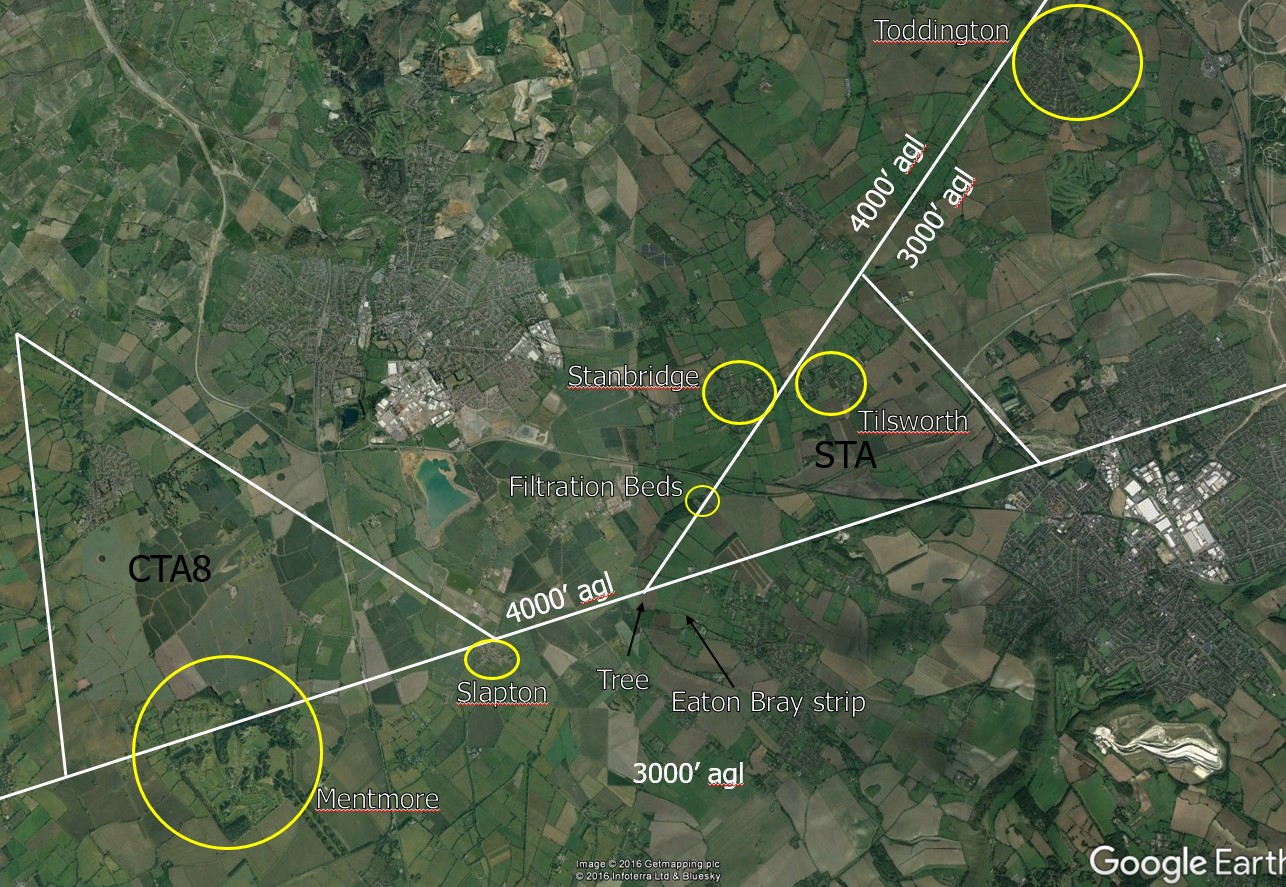
Learn the line. Be aware of the status of CTA8 and the STA. Usually CTA8 is available when Luton are on “26” and is useful when towing to 4000′ agl. When Luton are on “08”, CTA8 will be limited to 3000′ agl, but it is unlikely you will need it as the wind is likely to be in the East. However, the STA (Spin Training Area) is likely to be given to us, extending the area we can tow to 4000′ agl. Take care not to get trapped in the corner though.
The following photos show parts of the 3000’/4000′ line and the tree that sits at the angle point.
- Location of the “Tree”
- Slapton, looking NE
Airspace and Transponders
Transponder use may soon be mandatory for aircraft. All tug aircraft will be fitted with one before long. This means it is even more important that tug pilots know the boundaries with precision. The detailed maps shown above will be available in each tug and should be consulted regularly to maintain this knowledge.
Be absolutely sure of the permitted airspace and use it in a varied and efficient way.
Remember you are now being watched!
Return to ‘Operations’ Return to ‘Front Page’

